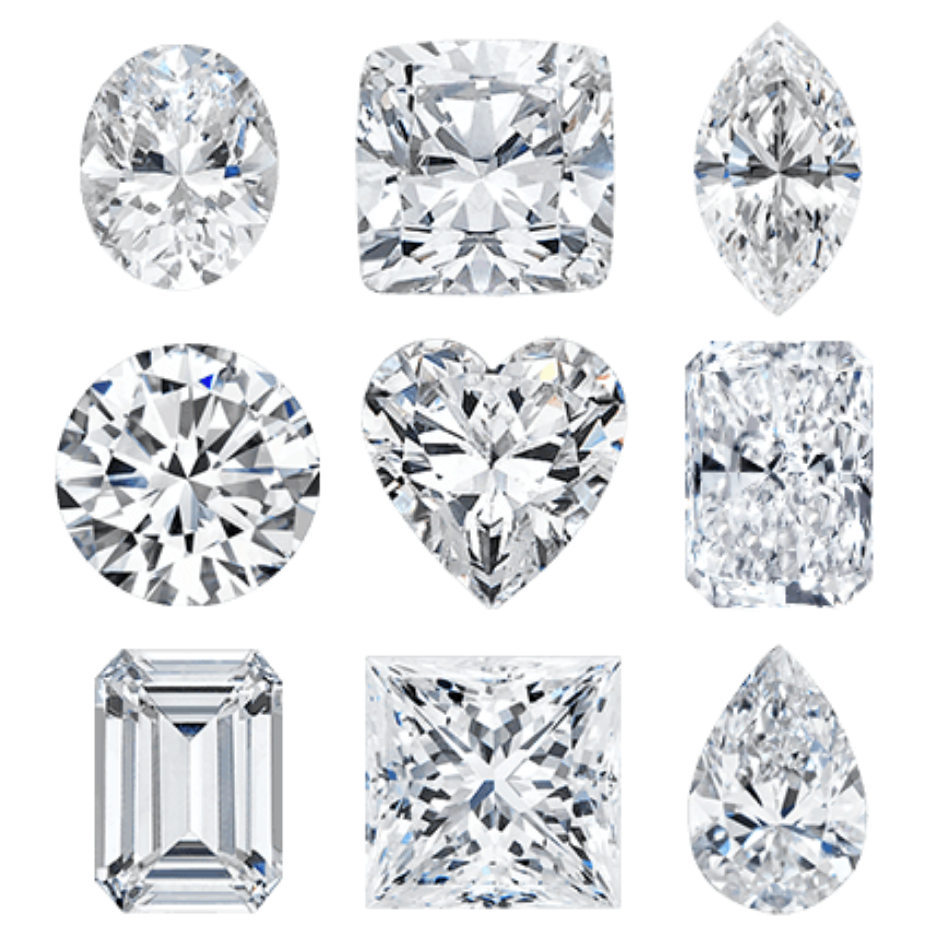The Ultimate Guide to the 4Cs of Diamonds
When it comes to buying a diamond—whether it's for an engagement ring, a timeless piece of jewelry, or even an investment—understanding the 4Cs is essential. These four characteristics—Cut, Color, Clarity, and Carat Weight—determine the quality and value of a diamond.
In this comprehensive guide, we'll break down everything you need to know about the 4Cs to help you make an informed decision when choosing your perfect diamond.
What Are the 4Cs?
The 4Cs were developed by the Gemological Institute of America (GIA) to create a universal standard for evaluating diamonds. These criteria help you compare and understand a diamond’s quality across different sellers and certifications.
Let’s explore each C in detail.
1. Cut: The Sparkle Factor

The cut of a diamond refers to how well the diamond has been shaped and faceted to interact with light. It’s arguably the most important of the 4Cs because it directly affects a diamond’s brilliance and fire—the things that give it that irresistible sparkle. The cut affects the diamond’s brilliance and sparkle, as it determines how light reflects off the stone. A well-cut diamond will sparkle beautifully, while a poorly cut diamond may appear dull, even if it has high clarity and color.
- What to look for: Focus on a diamond with a high-quality cut. The best cuts are typically classified as Excellent or Very Good.

Why It Matters: Even a high-quality diamond in terms of clarity and color can look dull if it’s poorly cut. On the other hand, a well-cut diamond can appear more brilliant and even slightly larger than one of equal carat weight but lower cut quality.
Tip: Always prioritize cut quality. A smaller diamond with an excellent cut will often look better than a larger one with a fair cut.
2. Color: The Absence of Hue
Diamonds are graded on a color scale from D (colorless) to Z (light yellow or brown). The less color a diamond has, the more valuable it is, as colorless diamonds allow more light to pass through, enhancing their brilliance.

- What to look for: Color differences can be subtle, but they significantly affect price. If you want a near-colorless diamond, opt for grades in the D-F range. For a more budget-friendly option, diamonds in the G-H range offer excellent value while still appearing colorless to most people.

3. Clarity: The Inclusions and Blemishes
Clarity refers to the presence of inclusions (internal flaws) or blemishes (external imperfections) within a diamond. While all diamonds have some form of imperfection, the fewer and less visible the inclusions, the higher the clarity grade.

Clarity Grades:
- FL (Flawless): No inclusions or blemishes visible under 10x magnification
- IF (Internally Flawless): No internal inclusions, only external blemishes
- VVS1–VVS2 (Very Very Slightly Included): Inclusions are extremely difficult to detect
- VS1–VS2 (Very Slightly Included): Inclusions are minor and difficult to see
- SI1–SI2 (Slightly Included): Noticeable inclusions under magnification, may be visible to the naked eye
- I1–I3 (Included): Obvious inclusions, can affect brilliance
- What to look for: For the best value, look for diamonds with a clarity grade of VS1 or VS2 (Very Slightly Included), as these diamonds are nearly flawless to the naked eye.

Most buyers opt for diamonds in the VS1–SI1 range, where inclusions are minimal or invisible without magnification, offering a good balance of appearance and value.
Tip: Always ask to see the diamond under magnification. A well-placed inclusion can be hidden under a prong or be completely invisible once set.
4. Carat Weight: Size and Presence
Carat weight measures the size of the diamond. One carat equals 0.2 grams. While larger diamonds are generally more expensive, keep in mind that carat weight isn’t the only factor that determines a diamond’s value—cut, color, and clarity are just as important.
- What to look for: Consider the balance between size and quality. For instance, a 1-carat diamond may look just as stunning as a slightly larger diamond if it has a higher quality cut, color, and clarity.


Why It Matters:
Carat is often the first thing people focus on because it’s the most visible trait. But it’s essential to balance carat weight with the other 3Cs to ensure overall beauty.
Tip: Go for slightly “under-size” diamonds (like 0.95ct instead of 1.00ct) to save money without a noticeable difference in appearance.
How to Prioritize the 4Cs
If you’re shopping on a budget, you may need to make trade-offs. Here’s a general guideline:
- Maximize Cut: Never compromise here—it’s the foundation of beauty.
- Balance Color and Clarity: Choose near-colorless and eye-clean diamonds for optimal value.
- Be Smart with Carat: Go just below common weight thresholds to stretch your budget.
Final Thoughts: Choosing the Right Diamond for You
The 4Cs give you the tools to evaluate and compare diamonds, but the “perfect” diamond is ultimately the one that fits your taste, lifestyle, and budget. Whether you prioritize sparkle, size, or ethical sourcing, knowing how each C affects the diamond will help you make a confident and informed purchase.
Quick Recap:
- Cut = Sparkle and brilliance
- Color = Whiteness (or absence of yellow/brown tint)
- Clarity = Flawlessness
- Carat = Weight and size
A well-balanced diamond that optimizes all 4Cs can deliver extraordinary beauty and value.
Ready to Choose Your Diamond?
Whether you're going with a natural stone or exploring the brilliance of lab grown diamonds, understanding the 4Cs is the first step to finding a piece you’ll love forever.
Still unsure? Our expert gemologists are here to help you evaluate options and choose the perfect stone for your special moment.



